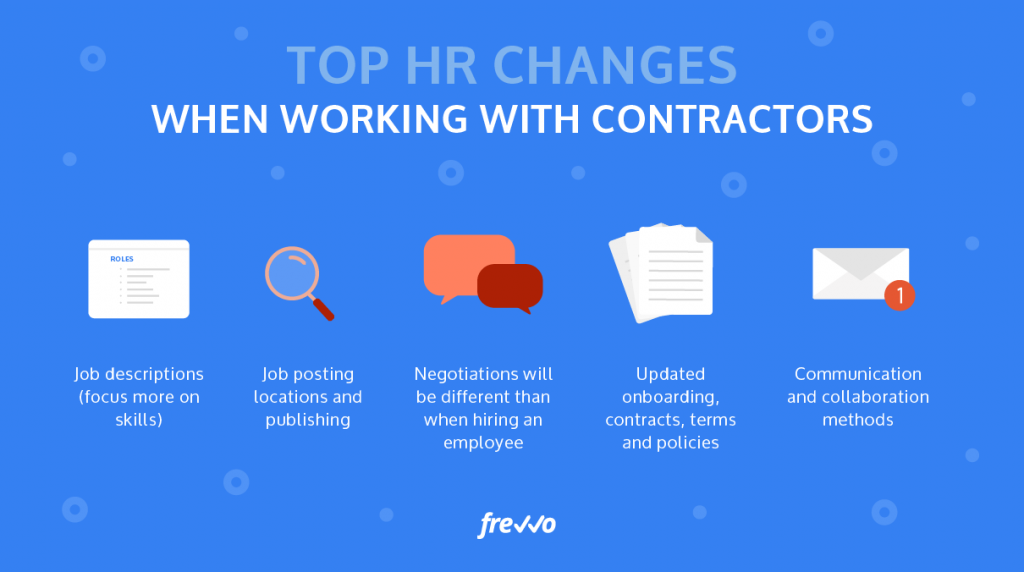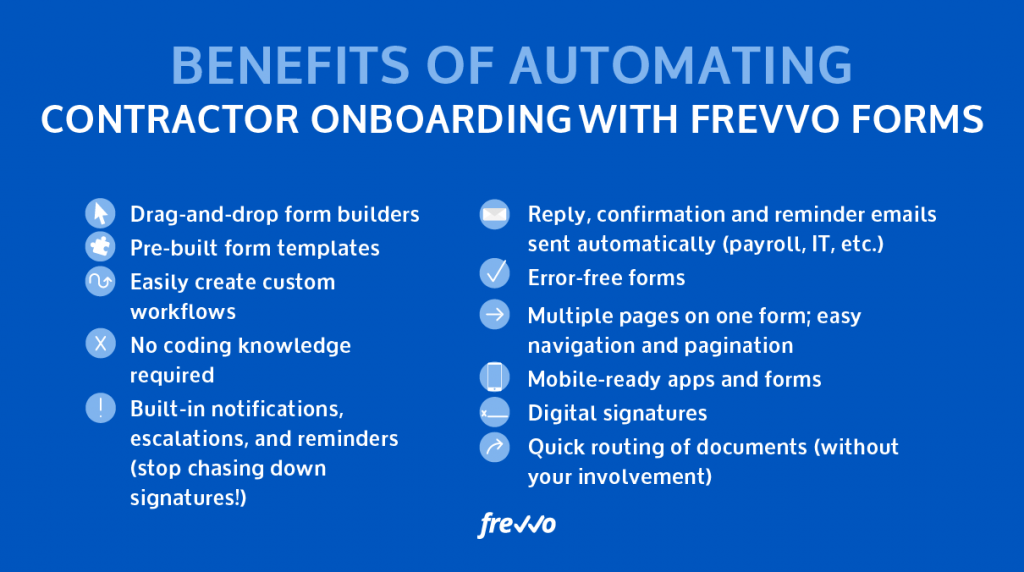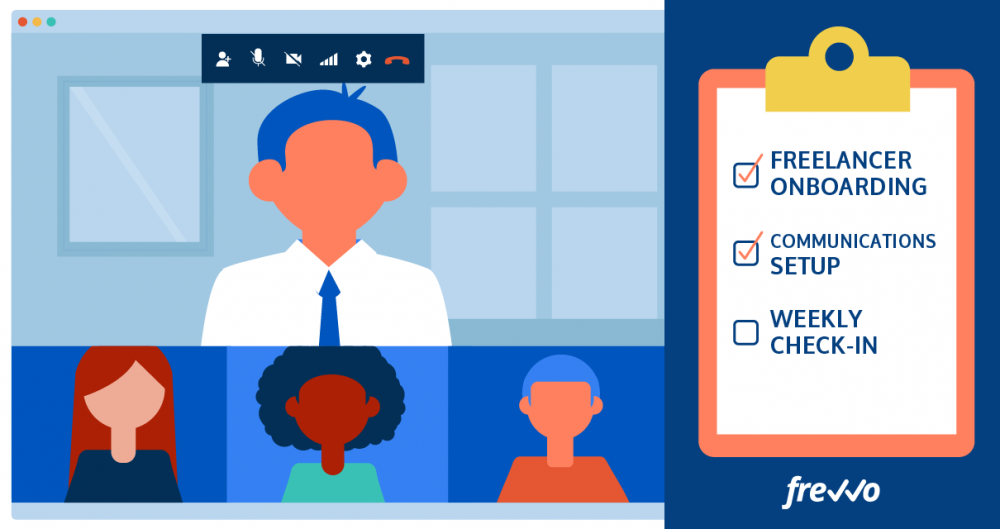Flexibility is the new employment. Freelancers, contractors and part-timers are leaving their stable full-time positions to “gig” their way to more flexibility and freedom from the 9-to-5 grind.
The gig economy started as a trend, but it is now becoming an industry mainstay. Last year, 41 million American workers (consultants, freelancers, contractors, temporary, or on-call) generated $1.28 trillion in revenue for the US economy.
The HR challenge? Current hiring and onboarding protocols cater to full-time employees only. Human Resource departments will have to change their methods and introduce new practices to adapt to hiring and onboarding gig workers.
“How Will the Gig Economy Affect My Organization?”
The gig economy is here to stay. From 2010 to 2019, the share of gig workers in organizations has grown by 15%, while more than 1 in 6 workers in organizations is a gig worker. Organizations are taking advantage of this growth surge because of the opportunity it provides.
Reduces complexity for internal staff
Complex projects no longer need to overwhelm your staff or result in a chaotic work environment. Contractors can become supplemental help to employees and pick up the slack where needed, keeping your projects moving along smoothly and keeping your team hitting goals.
Specialized skills and well-rounded skill sets
Gig workers are often highly skilled and offer specialized expertise because they become masters of their craft. They are also well-rounded since they work for many different companies and can adapt and pick up the best knowledge from each experience. Since they have worked with multiple organizations, freelancers can bring another perspective to your organization to help you innovate and scale.
However, challenges abound…
While taking part in the gig economy can be a leap forward toward, taking on larger projects and scaling your organization, it presents HR with some challenges.
Transitioning to working with contractors (even on a one-off project basis) will affect every step of the hiring process:

In addition to updating the hiring process, preparation should also include educating your current employees about the transition and making them aware of the benefits of working with contractors. Taking part in the gig economy can threaten your employees’ trust in your organization if not properly addressed. Early preparation and open communication with employees will help your employees to see the adoption of contractors as beneficial to them and their future with the company.
“Business as usual” will not be enough to snag the best contractors and integrate them within your organization’s ecosystem. Let’s take a look at how you can seize the gig economy and prepare for this new surge.
How HR Can Prepare for Seamless Integration with Outside Contractors
Is Every Project Right for a Gig Worker?
Working with contractors or freelancers means transitioning away from thinking about jobs as a position and instead, a set of tasks and skills. Look past the nature of the job into the day-to-day tasks so you can decide which type of worker is best for the job, whether employee or contractor (short or long-term gig).
For long-term roles (years), employees will typically cost less than a contractor. In addition, contractors may not be open to working on a long-term gig because they want to remain flexible.
If you need help with creative and/or tech projects, freelancers may be a good choice since they possess specific skills. Think writing, design, web development and marketing.
Establish an Onboarding Strategy for Gig Workers
Unsuccessful contractor-client relationships typically occur because of the lack of a proper onboarding process. Does the onboarding process for gig workers need to be as involved as full-time employees? No. But you do need an onboarding process for part-time freelancers and gig workers – even if they are doing one-off projects.
To protect your company and its assets, verify the freelancer’s education and work history and credentials (ask for references) similar to how you would for an employee, to ensure they are trustworthy. You may be giving this worker access to proprietary company information so you want to know you can trust them. You may also want to implement non-disclosure and service level agreements.
Provide detailed training and outline your expectations upfront so miscommunication doesn’t become an issue that derails projects. A quick video call or training session (in-house or via phone, depending on the worker’s location) can help. Agree on a one-off test project as well (if applicable) so you can evaluate the contractor’s skills and the contractor can evaluate you as a client.
Automate the Onboarding Process (and Make it Mobile-Friendly)
Avoid making the onboarding process long and drawn out. Freelancers are attracted to the flexibility their work environment provides, so they won’t want to be bogged down with excessive paperwork and processes before they even get started on the gig.
Limit onboarding to as few steps as possible by automating the process. Combining forms into one event and automating the process speeds up workflow and increases productivity. With frevvo’s automated HR workflow software, you can deploy automated workflows for every step of the onboarding process.

Leverage Automation Throughout the Entire Process to Decrease the HR Burden
We already discussed how automation can streamline the onboarding process. In addition, leveraging additional technology can also keep contractor management efficient and productive.
Consider technology solutions that will allow you to:
- Keep track of contractor project timelines (e.g. Asana, Trello)
- Use freelance management systems and networks for project recruitment (e.g. Upwork)
- Track hours and timesheets (e.g. RescueTime, Toggl)
- Manage payments and invoicing, whether domestic or international (e.g. Xero, Quickbooks, Paypal, Transferwise)
Engagement and Integration into Your Environment
Innovative and engaged, independent contractors will dedicate themselves to your projects and take a lot of pride in their work because it reflects directly on their business. However, they may not be as committed to your company as full-time employees since they work for 4-5+ clients at a time. To make them feel like a part of your team and important to your organization’s success, integrate them into the company culture and maintain a consistent experience across your entire team.
Here are some ideas:
- Add them to all digital communication channels (Slack, emails, Asana, internal social networks, etc.)
- Introduce them to other team members
- Set up one-on-one video meetings for contractors with employees (in the case of longer-term contracts)
- Involve them in strategy where appropriate and keep them abreast of company goals and KPIs they may be working towards
- Continue to mentor them as you would an employee
- Set deadlines but keep flexibility a part of the equation by allowing contractors to suggest projects and the hours they will work
- Provide access to information they need to do their job effectively so there are no information silos
And lastly…
Become an Employer of Choice
Working with contractors and freelancers can enhance your organization and provide new levels of innovation and growth for your company. But, hiring new contractors over and over again can stifle productivity.
Become an employer of choice for freelancers so they want to continue working with you on future projects. Integrating them within your company culture and keeping the engagement flexible by automating your HR processes can keep your company top of mind when new projects come around. What should you automate? In this free ebook, learn the top 7 HR processes that are perfect for automation.

